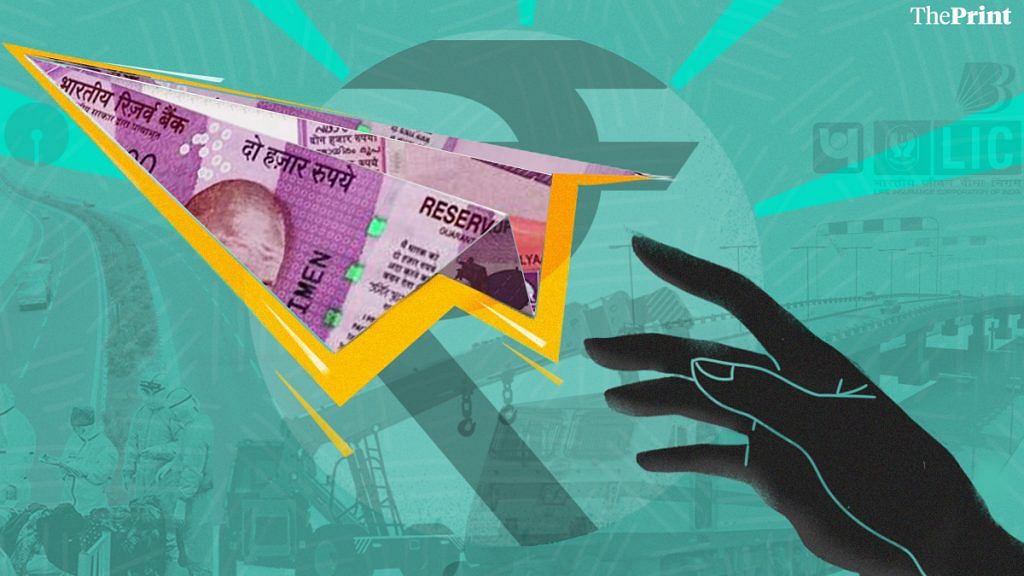The key message in Budget 2021-22 that makes it different from those of the last 15 years is the policy tilt in favour of growth and markets.
The themes of infrastructure investment, privatisation and preventive healthcare — including public goods such as clean water, clean air, and waste management — form an important part of the government’s spending programmes. In contrast to previous Budgets, there were no announcements of a large number of welfare programmes or government schemes with political messaging or ideological salience.
The issue of increasing the FDI limit in insurance from 49 to 74 per cent had almost become a test for the government’s reformist credentials in the last few years. By announcing the increase, Finance Minister Nirmala Sitharaman gave a clear message to the world that India was not closing down. This message balanced some of the protectionist flavour that came from the increase in custom duties under the ‘atmanirbhar’ package.
The FM also used this opportunity to bring in greater transparency in Budget making. The practice of FCI borrowing for food subsidy being shown off-Budget was discontinued. Today is a time when a higher fiscal deficit is seen as good. This, in addition to the CAG report that had pointed out that the actual deficit was 1.5 to 2 per cent higher, could have led to this initiative.
The markets have also reacted positively to the absence of a Socialist tilt to the Budget.
Also read: India Inc hails Budget 2021 as reformist, says it will drive post-Covid economic revival
Infrastructure spending, clarity on privatisation
Budget 2021, presented in the midst of a global pandemic, in a year when the economy has contracted, seen job losses and witnessed rising economic distress, could easily have been another one with large welfare schemes. It could have continued another year of 9.5 per cent fiscal deficit. Instead, the finance minister focused on infrastructure spending. Infrastructure investment has been stagnating for the last decade and needed a push.
Similarly, the question of jobs could have been addressed either in a cyclical manner such as through more money into MGNREGA. However, given the limited resources available to the government this year, it seems to have a crowding-in model in mind: Where an increase in public investment in infrastructure crowds-in private investment, and brings in growth and jobs.
Nirmala Sitharaman is to be congratulated on talking clearly about privatisation, rather than sugar-coated as ‘disinvestment’. Instead of merely a positive, short list of enterprises that would be privatised, she made a significant proposal — that other than four sectors that are strategic in nature, public sector enterprises in all other sectors will be privatised. She has asked the NITI Aayog to prepare a list of such enterprises.
In an economy that has become used to hotels being run and watches being produced by government-owned enterprises, this announcement itself is a great step forward. It will free up resources locked up in many dead, loss-making enterprises. Further, the announcement that two public sector banks will be privatised also adds to the clear message of a departure from the status quo.
Also read: India prevailed over Covid. Now Budget 2021 sets the design for economic growth
Questions about DFI, bad bank
Infrastructure investment is to be financed by higher public investment though the Budget and by the private sector. For the private sector to be able to borrow money to build infrastructure projects, the minister has proposed setting up a Development Finance Institution. It has been well recognised that borrowing from banks where there is a maturity mismatch creates a problem.
The details of the DFI are yet to be seen. The financial sector legislative reforms commission had recommended that for the creation of a deep and liquid bond market, the government should set up a public debt management agency (PDMA), which would be responsible for the government’s borrowing and that could help build the bond market. This is also a year when the government is going to borrow a large amount from the market; it should be a good year to put in work to set up the agency.
The question is about who will own and manage the DFI — if it is bureaucrats, will the DFI not hit the same kind of troubles as the earlier experiences with ICICI and IDBI show?
Similarly, the proposal to set up a bad bank will need much greater clarity. If the bad bank has to purchase non-performing assets from banks, what will be the price at which these assets will be purchased? At present, banks can take the borrowing company through the bankruptcy mechanism and sell the asset at a price that the market gives, for which there is competitive bidding. The finance minister did not announce in the Budget speech how much money was being put aside, or the details of the new institution or fund.
However, the Budget has given a clear message in favour of reviving the economy, infrastructure and markets. This should be followed up by reducing red-tape, simplifying the tax and regulatory framework, and reforming the financial sector to create a conducive environment for investment.
Ila Patnaik is an economist and a professor at National Institute of Public Finance and Policy. Views are personal.
Also read: Budget didn’t give in to bad Covid cess idea, good it left taxes untouched
